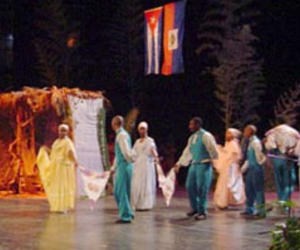105th Anniversary of French Tumba to be celebrated
- Submitted by: manso
- Arts and Culture
- 10 / 19 / 2010

The 105 years of the Santa Catalina de Ricci French Tumba are to be celebrated in the province of Guantánamo within the Cuban Culture Event, which will pay tribute to important artistic institutions until October 20.
In relation to this anniversary there took place an encounter between Tombs, a musical-dance expression born in the coffee plantations to the eastern part of the country, and keeper of a culture that was a legacy from natives and immigrants, says AIN.
From this very ancient Artistic Societies survive currently La Caridad de Oriente, from Santiago de Cuba; Bejuco de Sagua de Tánamo, from Holguín and the Santa Catalina, called like that in honor of the patron saint of the Villa del Guaso.
Different recognitions support the prestige and integrity of the group from the easternmost part of Cuba, which after a century of its creation challenges new dancing standards and maintain its distinction unchangeable.
These folk relishes in Cuba are among the best examples of the trans-cultural process, derived from the migratory flow of French landowners and their slaves, after the outbreak of the Haiti Revolution at the end of the 18th century.
Tumba is a conga Word which means loud drum party and it was originally celebrated by Haitian blacks and mulattoes, who imitated the court dances of their French owners, but following African instruments.
That is the reason why these societies –declared by UNESCO Cuban Masterpieces of Oral and Immaterial World Heritage- include in their dance repertoire genres such as polka and minuet, which have a European essence and Yubá, Front or Frenté, expressions from the so called black continent.
Many researchers hold that the roots of the Changuí are to be found in this expression. The Changui is one of the primary cells of the Son, born in the easternmost part of the island.
Cubarte Translation Staff
Comments